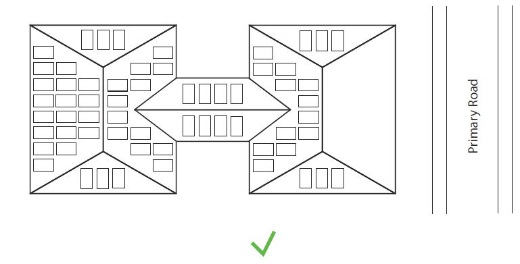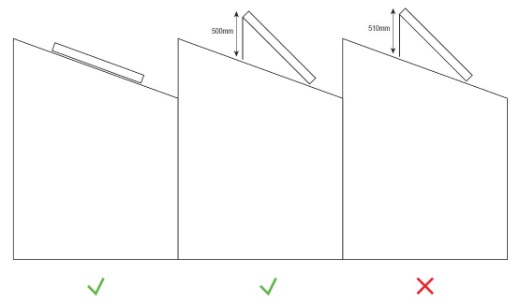Apply to Install Solar in Heritage Areas
Apply using our Heritage Works without Consent Guideline and Form
Getting prepared
To complete our Heritage Works without Consent form for a solar installation you will need to have the details below. These can be provided by a solar installer as part of a quote.
- Proposed placement of panels on your roof e.g. an aerial image of your property showing the location and arrangement of panels.
- The angle and maximum height of the panels protruding above the roof plane.
- The location of associated equipment like inverters, meters, etc.
- A brief description of the installation method details specific to your site.
Steps to complete the form
- Download the Heritage Works without Consent Form here.(PDF, 250KB)
- Fill in your contact and property details on pages 1-2
- Use the text below and information from your solar provider to help complete page 3.
Current use of property: [Write whichever use is appropriate]. “Single residential” or “Not single residential”
Description of proposal: [Insert this text]. “Install solar panels on the roof. Works are in accordance with the requirements of the Development Application exception for solar panels in heritage conservation areas – Guideline.”
Proposed methodology: Ask your supplier to provide a brief description of the installation method details specific to your site.
Additional Documentation: Your supplier may be able to provide the following details/documents for you.
- Provide a scale plan or aerial photograph showing the location and arrangement of the proposed solar panels.
- Note the angle and maximum height of the panels protruding above the roof plane
- Clearly indicate the location of associated equipment like inverters, meters, etc.
4. Complete the details and declarations on the final pages. Note that the usual fee to submit a Heritage Works Without Consent Form is waived when it relates solely to the installation of solar energy systems.
Submit your application
Email your application to records@woollahra.nsw.gov.au.
What happens next?
Our Planning Team will check your property’s heritage significance on our mapping and use the information you provide to determine if your works can be approved under this Guideline.
Note: Please allow for a minimum response time of 14 days. You cannot commence works until you receive a response to your application.
What are the requirements for our system to be approved under this Heritage Works without Consent Guideline?
Your Heritage Works Without Consent application for solar panels will most likely be approved under this Guideline if it meets the following requirements:
- Location: solar panels must be located on the rear slopes of roofs and should not face the primary road. (See Figure 1). They should be located at least 300mm from the ridge(s) of the roof. (See Figure 2). They should not be located on dormer roofs.
- Alignment: on sloped roofs, solar panels must be parallel to the lower edge of the roof plane. (See Figure 2)
- Projection: solar panels must not extend over the edges of the roof plane. The solar panel should not project more than 500mm from the surface of the roof in any direction, at any point. Ideally, solar panels on sloping roofs will be parallel with the slope. (See Figure 3)
- Pattern: solar panels must be arranged in orderly rows with consistent offset from the roof edges. (see Figure 2)
- Pattern: solar panels on roof planes containing parapets, dormer windows, skylights and chimneys, and that are visible from the public domain (including the harbour), should be arranged in a symmetrical pattern, as far as possible, on the roof plane.
- Visibility: the visibility of associated equipment such as conduit, mounting rails and clips should be reduced as much as possible – not protruding from under the panels.

Figure 1: no panels on roof plane facing primary road

Figure 2: panel alignment, location and pattern

Figure 3 - panels should not project more than 500mm
Related equipment on walls:
- Location: equipment associated with a solar energy system, other than solar panels, may be installed on building walls that do not face the primary road. They should not cover windows and should avoid decorative features.
- Fixing methods: penetrations to stone or brick walls required for fixings should be made in the mortar joints, rather than into brick or stone itself.
Other Considerations
- It is the applicant’s responsibility to make sure that all building works are carried out in accordance with applicable legislation and codes.
- Applicants are strongly encouraged to consider providing clear access paths around solar panels to allow for roof maintenance. A setback of 300mm from the edge of the roof and obstructions is recommended.
- There is no limit on how much of a roof may be covered by solar panels, except as noted in this guideline.
- Applicants are encouraged to use solar panels that have a design that is visually recessive (i.e. less noticeable) in terms of colour and pattern. For example, entirely dark grey/black solar panels are preferred to those with silver banding.
- In some instances, there will be a risk that future nearby development will result in overshadowing of solar panels. To minimise this risk, owners are encouraged to check the planning controls that apply to surrounding land when considering the location of solar panels.
FAQs
Please read all the FAQs below so you understand the application process, fee waivers and requirements for your application to be approved.
What solar energy system items are covered by this Guideline?
For the purpose of this Guideline, solar energy systems include: rooftop solar panels (photovoltaic electricity generating systems) and associated fixings, conduit, batteries or inverters; solar hot water systems; and solar air heating systems.
Are there any fees?
- The usual fee to submit a Heritage Works Without Consent Form is waived when it relates solely to the installation of solar energy systems.
- The usual fee to submit a DA is waived when it relates solely to the installation of solar energy systems.
What will happen next when I apply?
- When you submit a Heritage Works without Consent Form our Planning Team will check your property’s heritage significance on our mapping and use the information you provide to determine if your works can be approved under this Guideline.
- If you submit a DA, Council will review your application and advise if your works have been approved.
Do I need to wait for a response before installing my solar panels?
Yes, you need to wait for a reply before starting any work. If works commence before this advice is received from Council they may be non-compliant and will not be approved retrospectively. Fines and orders may be incurred for non-compliant works.
What is a primary road when considering if panels are on a roof plane facing the primary road?
A primary road is one which the front of a dwelling house, or a main building, on a lot faces or is proposed to face. Some buildings may have more than one primary road, if they are located on a corner and have a frontage to both roads.
Systems facing a primary road are not permitted in the Heritage Conservation Area. See the full explanation of this in our DCP Chapter E6, Part E6.3 Objective O1, Control C2b states “For buildings in a heritage conservation area and buildings which are local or State heritage items, the solar energy system must meet the following location requirements: … b) Is not placed facing the primary road”.
How can I check the heritage status of my property?
Visit the mapping page to access tools to view the heritage status of your property, including any heritage conservation areas or heritage listings that may affect it.
What is a heritage conservation area?
What is the relevant Council legislation and planning guidance?
Who can I ask for more information?
If you would like to discuss this process please call our Duty Planner on 9391 7000.
More information